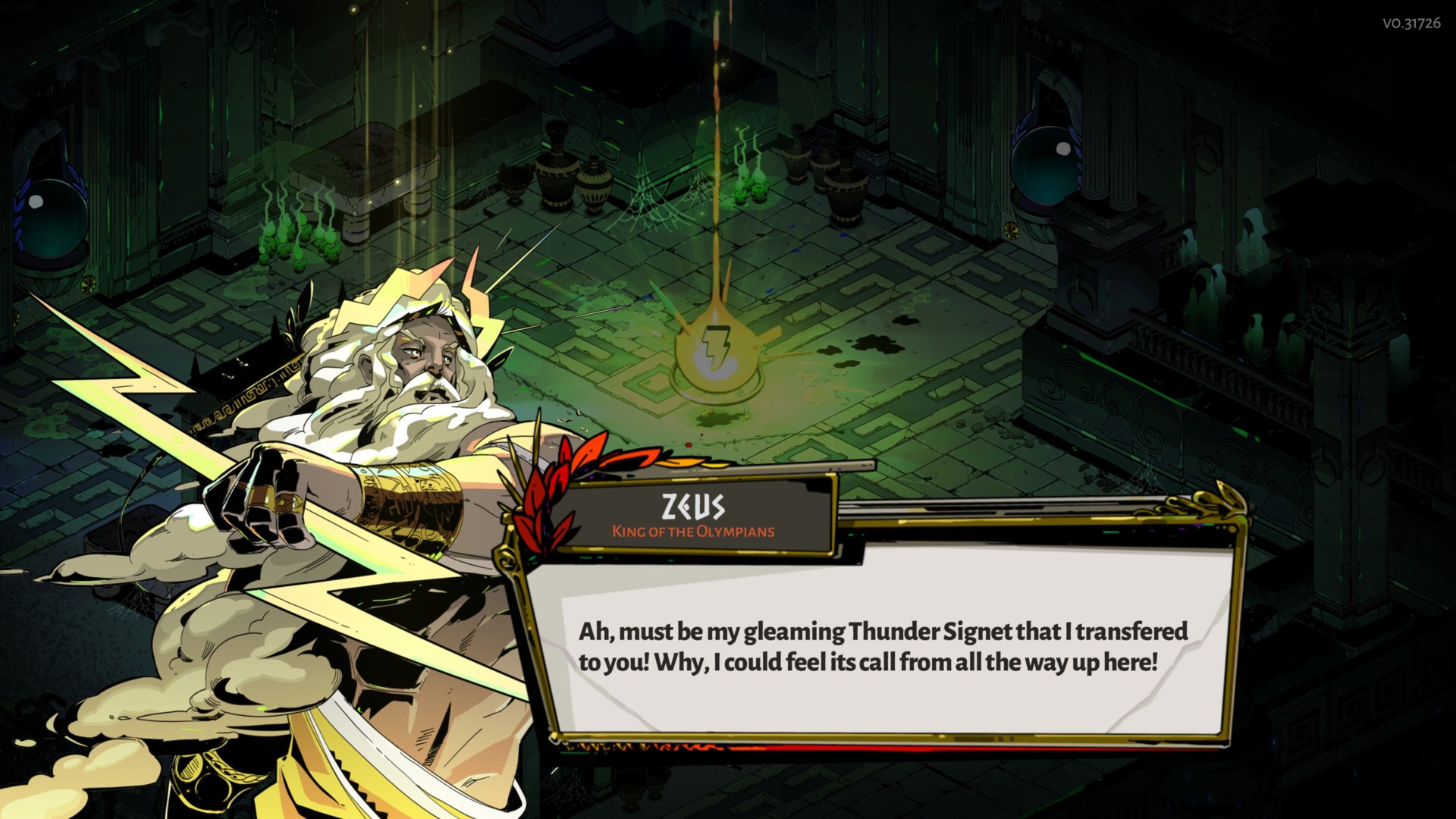
Hades is a video game developed by Supergiant Games and released on the 17th of September 2020. It has also consumed far too much of my life since then.
In Hades, you take on the roll of Zagreus, the disaffected son of the one and only ruler of the ancient Grecian Underworld – Hades himself. Dissatisfied with the lack of – I don’t really know, sausage rolls – in the Underworld, you spend the game endlessly trying to climb through the layers of the Underworld to reach the surface.
Like many people, I imagine, what initially sold me on the game was it’s beautiful art-style; every character you meet is illustrated in a style wonderfully reminiscent of comic-book art, but fine-tuned to perfection; the chambers of the Underworld in which you roam are decorated with bubbling pits of lava, or flames which glimmer green or purple. Everything about the game just fits together perfectly; not only is each section masterfully created, it’s masterfully created to fit with everything else in the game.

The art of Hades was created mainly by three people: Jen Zee, the art direction; Joanne Tran, the environmental artist; and Paige Carter, the 3D artist. Though all three are truly excellent artists, I’m going to focus on Jen Zee’s contributions the most, since she was responsible for illustrating the character portraits you see in the game. It’s difficult to pin down exactly what it is that makes the character portraits so compelling in Hades, but I think it’s mainly down to two things:
- Each character is drawn in a dynamic pose, with a half body shot. It’s commonplace for character portraits of this sort in games to just be a character’s face, however I think showing more of the character really makes them feel more real, and having a dynamic pose rather than them just standing still makes them seem all the more alive.
- The deceptive simplicity of how each character is shaded. Looking at the characters, it’s very easy to be fooled into thinking they’re just shaded with black for the shadows, but it’s actually far more subtle than that. There are actually three or four different shadow colours per character, which makes them seem to ‘pop’ far more; there’s also a subtle detail which I happen to particularly like: if you look closely at the edges of some of the shadows you’ll notice a small fringe of a different colour to imitate subsurface scattering; a phenomena where a material scatters light under the surface, most visible when you shine a light through your skin. This small touch gives different materials slightly different properties, in a style which it is otherwise very difficult to represent such qualities with.

The artstyle of Hades is one I think that’ll always inspire me to become a better figure artist, however not one that I think is particularly useful to analyse for this project. Instead though, I think it’s important to analyse the way in which Hades all fits together. Everything about Hades feels polished to a shine; the user interface, environments, and characters all fit perfectly together. I think this is down to the team that made Hades – Supergiant Games – being such a small team. Having so few people working on a title like this makes it easier for everyone to coordinate, which I think is something that is lost in bigger companies; it’s something I’ve noticed playing various high-budget games; it all looks good, but sometimes things don’t seem to flow together, or fit the same visual style as the rest of the game. I plan to do more research into this in future, but since this project doesn’t require working with a larger team, for now I’m just going to put a pin in it.
Sources:
